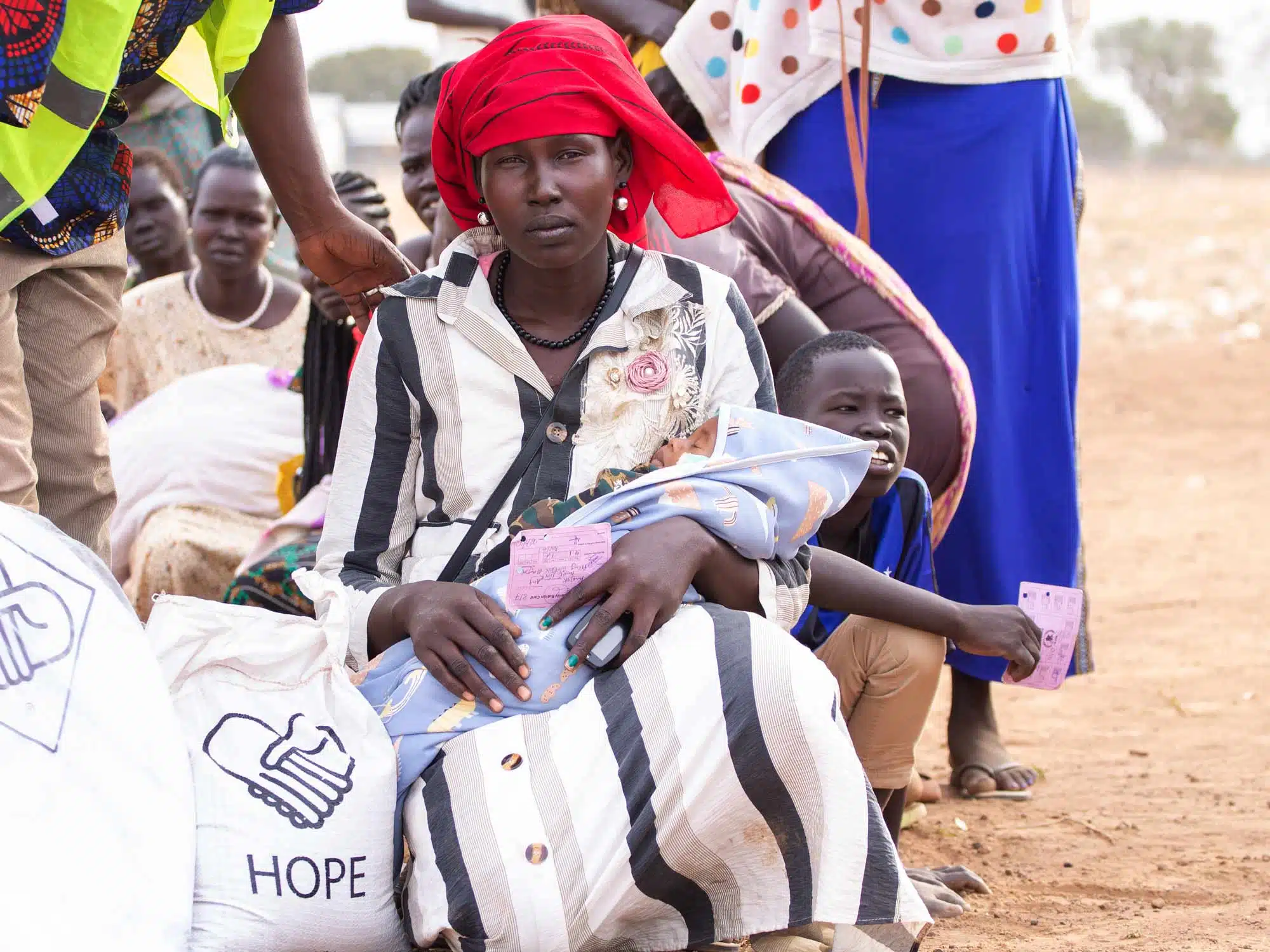Picture this: a world where your values, your dreams, and your unwavering commitment to the causes you hold dear continue to flourish long after you’re gone.
Welcome to the realm of planned giving, a strategic journey that goes beyond ordinary philanthropy … beyond fleeting donations.
In this guide, we’ll delve into the world of planned giving, dissecting its various names, including nonprofit planned giving, legacy giving, charitable bequests, and planned giving programs.

So, if you’re eager to explore how you can leave a legacy that echoes into the future, you’ve landed in the right space.
What Is Planned Giving?

At its core, planned giving is an intentional way of supporting the causes you’re passionate about.
It goes beyond traditional donations, involving meticulous planning and consideration to ensure your support continues beyond your lifetime.
Regardless of whether you’re an advocate for:
- • Environmental conservation
- • Education
- • Health care
- • Any other cause
planned giving offers a channel to create a lasting legacy that shapes the world long after you’re gone.
Remember, planned giving isn’t confined to a dollar amount and doesn’t have to be a major gift; it’s a testament to your values and aspirations.
As you navigate the realm of retirement plans, real estate, life insurance, and estate planning, you’re fashioning a story that goes beyond you — a story of transformation, a story of making the world a better place.
Now, let’s discuss the different names used to describe various types of planned gifts so you can understand their similarities and differences.
1. Legacy Giving
Legacy giving, also known as legacy gifts or legacy donations, is the heartfelt act of bestowing a portion of your assets or estate to a nonprofit organization or charity of your choice.
This benevolent gesture is typically outlined in your will, ensuring that your philanthropic aspirations continue to thrive beyond your lifetime.
At the heart of planned giving lies the intention to create a lasting impact, and legacy giving serves as its embodiment.
The synergy between these two concepts is striking.
When you engage in planned giving, you’re thoughtfully designing a roadmap for your charitable contributions, often taking into account:
- • Financial or estate planning
- • Tax benefits
- • Estate tax
- • Lour long-term goals
Within this framework, legacy giving emerges as a pivotal mechanism to solidify your imprint on the world. This type of gift leaves a legacy of your life behind — signifying something that you stood for in life and want to shine a light to at death for others to benefit from.


2. Charitable Bequests
A cornerstone of planned giving is the concept of charitable bequests.
Similar to a legacy gift, a charitable bequest is a gift outlined in your will, earmarking a specific amount or asset to a chosen nonprofit organization.
Charitable bequests manifest in various forms, encompassing:
- • Monetary donations
- • Property
- • And more
As you navigate the world of estate planning, consider the profound impact of charitable bequests.
Collaborating with financial advisors and legal experts can help ensure that your bequest aligns with your overall financial strategy and estate plan, maximizing the positive impact on both your chosen cause and your financial legacy.
3. Nonprofit Planned Giving
Nonprofits reap profound benefits from embracing planned giving. As they establish structured planned giving programs, they open doors for supporters to forge a legacy aligned with their beliefs.
These programs extend a spectrum of options to donors, from charitable gift annuities to charitable remainder trusts, while securing the organization’s future projects.
Also, donor-advised funds and member societies offer unique avenues for individuals, families, and organizations to come together, learn, and grow as a community while making a positive difference in the world.
These societies offer more than just financial contributions — they create an environment for collaboration, knowledge exchange, and the exploration of shared values.
Crafting Your Planned Giving Program
Are you a nonprofit grappling with the idea of venturing into planned giving?
Starting a planned giving program could be the first step to ensuring your organization’s enduring success.
This journey involves not only educating potential supporters about the impact of legacy giving but also collaborating with legal and financial advisors to facilitate a seamless asset transition that echoes the person’s wishes at the eventual point of a donor passing.
Maximizing Tax Benefits & Beyond
Engaging in planned giving isn’t just about creating a legacy — it’s also about the financial and tax benefits that come along. By incorporating planned gifts into your financial or estate plan, you can often optimize your tax deductions while contributing to causes that resonate deeply with you.
Charitable Remainder Trusts
A Charitable Remainder Trust (CRT) is a type of estate planning tool that allows individuals to provide for both charitable causes and their beneficiaries.
In a CRT, an individual (the donor) transfers assets, such as cash, securities, or real estate, into a trust.
The trust then pays out income to one or more designated beneficiaries (usually the donor and/or their family members) for a specified period, which can be a set number of years or the lifetime of the beneficiaries.
At the end of the trust’s term, the remaining assets in the trust are distributed to one or more charitable organizations specified by the donor.

This distribution generates a charitable deduction for the donor, which can help reduce their taxable income.
There are two primary types of CRTs.
1. Charitable Remainder Annuity Trust (CRAT): In this type of trust, the donor and beneficiaries receive a fixed annual payment from the trust based on a predetermined percentage of the initial trust assets.
2. Charitable Remainder Unitrust (CRUT): With a CRUT, the beneficiaries receive a fixed percentage of the trust’s value, as revalued annually. This means that if the trust assets appreciate in value, the beneficiaries’ payments increase, potentially providing a hedge against inflation.

Charitable Gift Annuities
A Charitable Gift Annuity (CGA) is a philanthropic arrangement where an individual donates a sum of money or assets to a charitable organization in exchange for a guaranteed stream of income for themselves or another beneficiary.
The charity agrees to make regular annuity payments to the beneficiary for the remainder of their life or for a specified period.
Presently, a tax-free opportunity exists for people 70½ and older wherein a single $50k IRA distribution can be directed towards a CGA, and numerous individuals are seizing this chance.
The annuity payments are determined based on factors such as:
- • The donor’s age.
- • The amount of the gift.
- • Prevailing interest rates.
A portion of the initial gift is considered a charitable contribution, which often provides the donor with a tax deduction in the year the gift is made.
The remainder of the gift is used by the charity to fund its programs and activities.
Charitable remainder trusts, charitable gift annuities, and outright gifts can be powerful tools that not only shape your legacy but also provide you and your heirs with considerable tax advantages.
Next Steps: Leaving Your Imprint
Planned giving isn’t solely about what you leave behind — it’s about the indelible mark you make on the world. Through legacy giving, charitable bequests, and structured planned giving programs, you are crafting a narrative of change and compassion that echoes through generations.
But let’s face it, navigating the complex world of legacy giving can feel overwhelming.
Don’t worry — at the Convoy of Hope Foundation, we’ve got you covered! We provide a simple, four-step process that makes sure your wealth is maximized for the greatest impact.

Step 1
Meet With
Our Experts
They’ll work toward understanding your unique giving desires and pair those goals with the appropriate financial strategies.

Step 2
Create Custom Giving Roadmap
Our team will create your custom giving roadmap — a detailed plan charting the course to your unique destination.

Step 3
Meet With Your Financial Advisor
Don’t worry, we’ll guide you through this process to ensure you’re confident in your ability to communicate what you want to accomplish.

Step 4
Ongoing
Check-Ins
Your financial plan is a marathon, not a sprint — we’ll provide ongoing check-ins to make sure you’re on track to reach your goals.
Schedule a call today and let’s kick off your journey to becoming a wise giver. Together, let’s make lasting positive change in this world.














